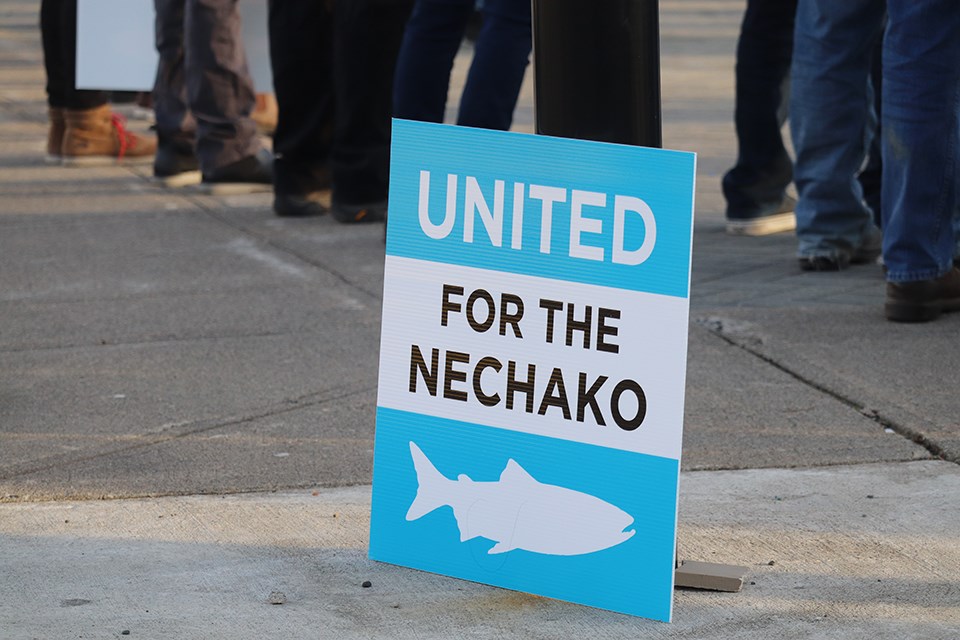The Saik’uz and Stellat’en First Nations are appealing a recent BC Supreme Court decision which acknowledged the Kenney Dam’s negative impacts on the Nechako River, but stopped short of assigning blame to Rio Tinto Alcan, the dam’s owner .
The decision acknowledged the dam's impacts on the Aboriginal rights and title of the Saik’uz and Stellat’en First Nations but because the dam was authorized by the B.C. and federal governments the court did not assign blame to the company.
The dam provides hydropower to the Rio Tinto aluminum smelter in Kitimat, which employs 1,000 people. It has dramatically lowered river flows since it was built in the 1950s, which has had a negative impact on salmon and sturgeon in the river.
The First Nations are now appealing the Jan. 7, 2022 decision and asking the court to review the conclusion that the company could not be legally responsible.
The court did emphasize the Crown “has an obligation to protect the plaintiffs’ Aboriginal right to fish by taking all appropriate steps to protect the fish and to act honourably in doing so.”
Saik’uz and Stellat’en say they remain ready to work with the federal and provincial governments to implement this declaration by the court, while they pursue the appeal to hold Rio Tinto responsible for the company’s role in the harm to their fisheries.
“We value the significance of the decision in our favour to affirm our rights and to establish accountability. The next step is to work on fixing this no longer justified infringement – for the future sustainability of the river,” said Councillor Jackie Thomas, the named plaintiff for Saik’uz and Chief when the case was brought forward in 2011.
The plaintiffs will ask the Court of Appeal to order the restoration of flows to the Nechako River that are sufficient to restore the natural functions of the river and to support the fish populations dependent upon it, including sockeye and the highly endangered Nechako white sturgeon.
“Our people have seen the impacts of the dam on our rivers and our fisheries, we know natural flows need to be returned before it is too late. Rio Tinto has responsibilities as well as government, and all parties need to be held to their obligations,” said Stellat’en Chief Robert Michell.
“Our way of life, culture and our future generations depend on it. We need the Courts to enforce our constitutionally protected rights.”
It’s estimated that river flow in the upper Nechako River is 36 per cent of what it was before the dam was built. Lower river flows are believed to be behind a dramatic decline in fish, notably sturgeon.
Nechako white sturgeon are considered endangered by the Committee on the Status of Endangered Wildlife in Canada. Efforts have been underway over the years to rebuild declining stocks through a hatchery.
When the case went to the BC Supreme Court last year, Rio Tinto acknowledged the harm caused by damming the Nechako and said it was committed to "maintaining an open dialogue with local First Nations and the Regional District of Bulkley-Nechako to find solutions."
"Rio Tinto remains fully committed to working with the Saik’uz, Stellat’en Nations and other First Nations in the watershed to build mutually beneficial, respectful and transparent relationships in a spirit of reconciliation. We will continue to collaborate with First Nations, governments and other stakeholders on improving the health of the Nechako River," said a spokesperson from Rio Tinto, in a statement sent to the Citizen.
“Our Nations are going to do what it takes to restore the river and protect the fish that populate the Nechako watershed,” Saik’uz Chief Priscilla Mueller said.
“It is a matter of key importance for us to defend our cultural inheritance for future generations.”
- with files from Nelson Bennett, Business in Vancouver.






